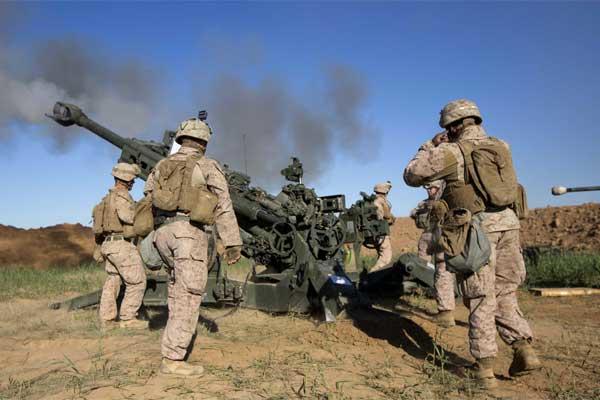Behind the scenes in the fight against Islamic State militants in Iraq are Marine intelligence analysts who work around the clock to produce what are called, in military euphemism, "target development products" -- essentially, information about enemy equipment and personnel to be destroyed.
As Iraqi security forces, supported by a U.S.-led coalition, fight ISIS militants with hopes to retake Mosul in the north by year's end, troops with Special Purpose Marine Air-Ground Task Force Crisis Response-Central Command provide "intelligence surge support," developing from one to six or more targets in a given week, task force commander Col. Kenneth Kassner told Military.com this week.
Speaking via phone from a location in the Middle East, Kassner said operational tempo had maintained its intensity since the unit rotated into the region in April.
Deploying in six-month rotations, the unit was created in 2014 as a contingency force for the region, based in six countries and on standby for operations in 20.
But since the 2,300-man task force stood up, operations in support of the fight against the Islamic State have dominated its responsibilities.
Four months into this rotation, Marine F/A-18D Hornets with the unit have conducted more than 1,500 sorties to take out enemy targets in Iraq and Syria.
Task force Marines also provide security at the Al Asad and Al Taqaddum air bases in Iraq, enabling training of Iraqi troops and advisory support at key locations near the fight.
And while the unit's Marines are not in combat on the ground, they quietly perform a number of background roles in the warfighting machine against ISIS.
"We have a very robust intelligence capability here in the [Marine air-ground task force] and what that enables us to do is, my intelligence analysts are able to better assess targets in support of the Iraqis' ground maneuver," Kassner said. "And once we develop that target, we're looking for different types of patterns of analysis associated with that target."
The intel, derived through air reconnaissance and other methods Kassner declined to describe, is submitted through coalition channels and used to inform the fight.
"Whether or not it is identified for a particular strike, that doesn't reside with this MAGTF," he said. "What we are providing is really a supporting effort to that larger target development process."
U.S. airstrikes have wiped out more than 26,000 individual ISIS targets in Iraq and Syria since the fight began, according to U.S. Central Command data compiled by Time Magazine. On the ground, Iraqi troops have celebrated several high-stakes victories; in June, they reclaimed Fallujah after nearly two years in the hands of enemy forces.
Kassner said the MAGTF also continues to keep its squadron of MV-22 Ospreys at the ready for tactical recovery of aircraft and personnel (TRAP) missions in support of the ISIS fight.
Amid constant and complex drills and training, both at home and downrange, he said, Marines had been able to "dramatically improve" TRAP response time, shaving minutes off every step of the mission, from equipment preparation to runway taxi.
While the task force has not been called to recover downed coalition aircraft or personnel since Ospreys deployed to recover an Air Force MQ-1 Predator drone in southern Iraq last June, Kassner said, the unit has forward-positioned aircraft at the ready in support of coalition strikes multiple times.
"Every minute is precious when conducting a tactical recovery of aircraft and personnel," he said.
-- Hope Hodge Seck can be reached at hope.seck@military.com. Follow her on Twitter at@HopeSeck.
Related Video:



























